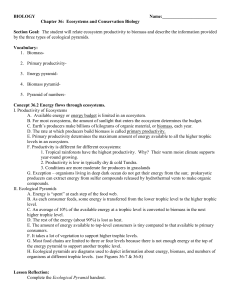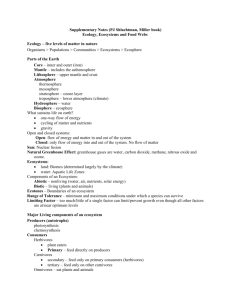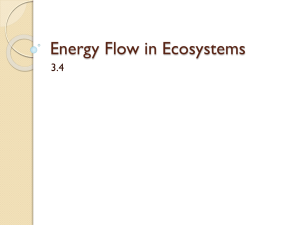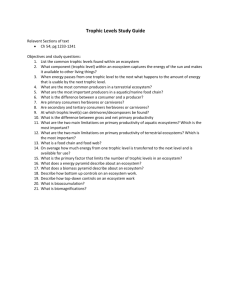Ecosystem Energetics Worksheet: Primary Production & Energy Flow
advertisement
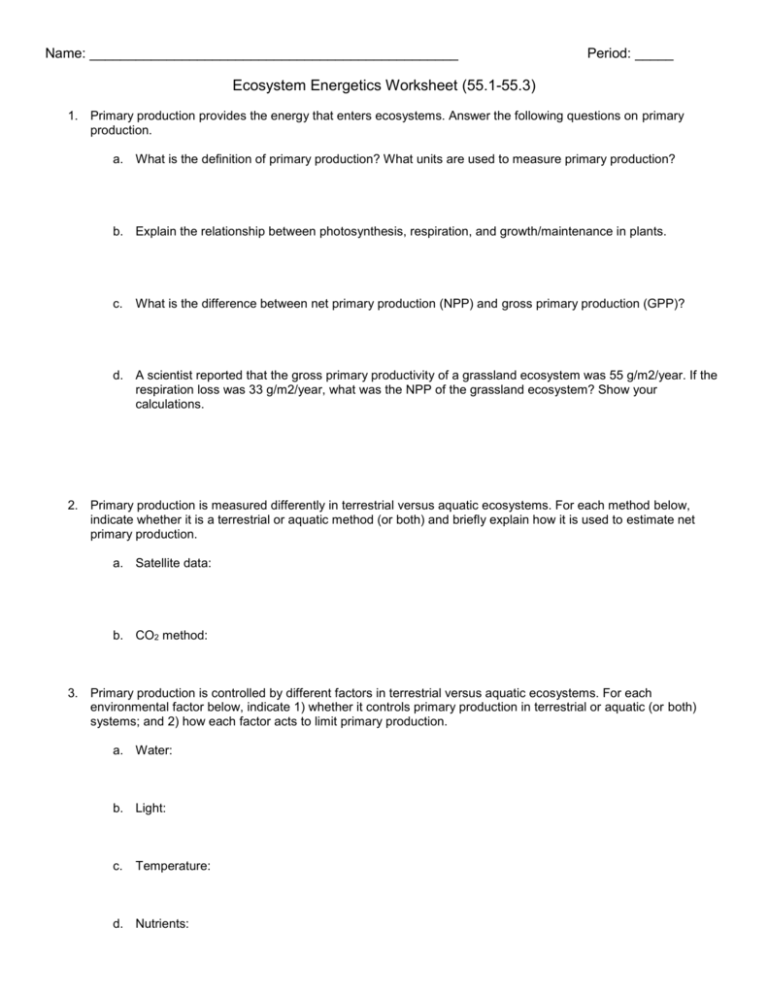
Name: ________________________________________________ Period: _____ Ecosystem Energetics Worksheet (55.1-55.3) 1. Primary production provides the energy that enters ecosystems. Answer the following questions on primary production. a. What is the definition of primary production? What units are used to measure primary production? b. Explain the relationship between photosynthesis, respiration, and growth/maintenance in plants. c. What is the difference between net primary production (NPP) and gross primary production (GPP)? d. A scientist reported that the gross primary productivity of a grassland ecosystem was 55 g/m2/year. If the respiration loss was 33 g/m2/year, what was the NPP of the grassland ecosystem? Show your calculations. 2. Primary production is measured differently in terrestrial versus aquatic ecosystems. For each method below, indicate whether it is a terrestrial or aquatic method (or both) and briefly explain how it is used to estimate net primary production. a. Satellite data: b. CO2 method: 3. Primary production is controlled by different factors in terrestrial versus aquatic ecosystems. For each environmental factor below, indicate 1) whether it controls primary production in terrestrial or aquatic (or both) systems; and 2) how each factor acts to limit primary production. a. Water: b. Light: c. Temperature: d. Nutrients: 4. Terrestrial biomes differ in their productivity. a. Which biomes tend to have the highest primary production? Which the lowest? b. For each of the high and low production biomes you listed above, explain why they have high or low productivity (i.e., what factors in their environment are responsible?). How does their geographic location affect these factors? 5. What is secondary production? How does it differ from primary production? How does primary production affect secondary production? 6. In a typical grazing food chain (e.g., producers → herbivores → carnivores), energy moves up the different trophic levels from primary producers (autotrophs) to herbivores (primary consumers) to carnivores (secondary and tertiary consumers). a. On average, what percent of the energy is transferred from one trophic level to the next? b. Draw a diagram of a biomass (energy flow) pyramid with the following trophic levels: producers, primary consumers, secondary consumers, and tertiary consumers. Draw your diagram such that the size of each trophic level (drawn as boxes) reflects its proportional amount of biomass/energy. c. Explain why the sizes of the trophic levels change as you move from producers to consumers. d. Where does most of the unused (and unassimilated) energy go in your biomass pyramid? What is this type of food chain called? 7. Draw a model of energy flow through an ecosystem. Use boxes for stocks and arrows for energy flows. 8. Draw a pyramid of primary productivity using the data given. 9. Complete the draw a food web include the sun, two primary producers, three primary consumers, two secondary consumers, two decomposes, respiration energy loss. Use arrows to show energy flow. 10. Complete this energy flow diagram:


